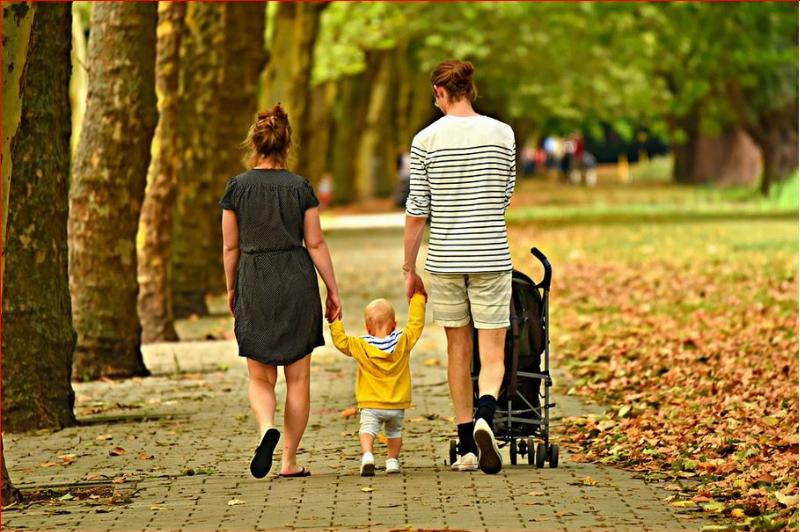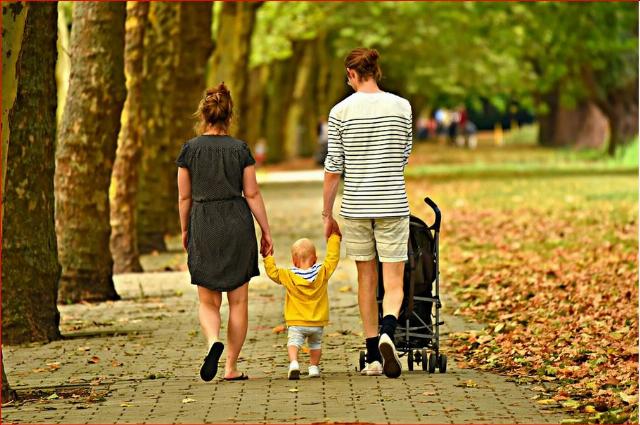


In the movie Mrs. Doubtfire, there’s a voice-over, intended to be heartwarming, from Robin Williams’s character. It’s in response to a child who is upset that her parents are divorcing. It goes like this:
You know, some parents, when they’re angry, they get along much better when they don’t live together. They don’t fight all the time, and they can become better people, and much better mummies and daddies for you.
And sometimes they get back together. And sometimes they don’t, dear. And if they don’t, don’t blame yourself. Just because they don’t love each other anymore, doesn’t mean that they don’t love you.
There are all sorts of different families, Katie. Some families have one mommy, some families have one daddy (or two daddies, or two mommies!) or two families. And some children live with their uncle or aunt. Some live with their grandparents, and some children live with foster parents. And some live in separate homes, in separate neighborhoods, in different areas of the country — and they may not see each other for days, or weeks, months...even years at a time. But if there’s love, dear...those are the ties that bind, and you’ll have a family in your heart, forever.
That sounds nice. No one wants to see a child, or anyone else, living in a house where the adults are fighting all the time. So maybe it’s better if the parents just split up. As of 2021, the divorce rate was approximately 2.5 per 1,000 people, and about 41% of first marriages are estimated to end in divorce. This figure appears to be relatively stable.
In 1970, the marriage rate was approximately 76 marriages per 1,000 people. By 2022, this rate had dropped to about 31.3 marriages per 1,000 unmarried women, marking a 54% decline since 1900.
So fewer marriages are occurring, and of the ones that do occur, 41% end in divorce. Does that mean we should take Mrs. Doubtfire’s advice and welcome alternative family structures? Do they deserve consideration for their adaptability and inclusivity?
The arrangement where children are raised by two people of the same sex, for instance, has shown comparable child-rearing outcomes in stable environments, per a BMJ Global health study. Single-parent households, often led by resilient individuals, can foster strong family bonds, and adoptive families provide support for those without traditional ties. These models reflect modern diversity and individual choice, which are valuable in pluralistic societies. However, their variability and lack of institutional grounding can make them less reliable for broad societal stability compared to traditional families, which offer a time-tested blueprint.
The traditional nuclear family has been a cornerstone of stable societies around the world throughout recorded history. It has contributed to social order, individual wellness, and cultural continuity.
Research consistently shows that children raised in two-parent households with a mother and father tend to have better outcomes in academics, emotional health, and socialization. A 2014 study found that children in stable, two-parent families were less likely to experience poverty, delinquency, or mental health issues compared to those in single-parent or non-traditional households. Mothers and fathers play complementary roles, which fosters well rounded development. Fathers are statistically more likely to engage in discipline and risk-raking play, whereas mothers emphasize nurturing and emotional security. They demonstrate how men and women interact with each other and their children, which helps their children prepare to navigate complex social environments.
Traditional families pool resources, share responsibilities, and reduce reliance on public assistance. Married couples benefit from dual incomes or complementary roles (working outside and inside the home). The U.S. Census Bureau (2020) reported that married-couple households had higher incomes and lower poverty rates than single-parent households. This reduces strain on social services and contributes to broader economic growth. Moreover, stable families are more likely to invest in long-term goals, such as homeownership and education, which augments community wealth and infrastructure.
Traditional families transmit cultural values, norms, and traditions, which anchor societies. In so doing, they foster continuity that binds communities together. Religious or cultural practices such as respect for authority and communal responsibility help maintain social order.
Another benefit of the traditional family is the maintenance of strong intergenerational ties, with grandparents, parents, and children forming a support network. This provides emotional and practical assistance, from childcare to eldercare, reducing the need for public support. In contrast, progressive family models may prioritize individual choice or non-biological ties, which can lack the same depth of obligation-based support.
The major reason to prioritize traditional family structures hinges on empirical and historical advantages such as these:
- Traditional families have been the dominant model from ancient Rome to the modern age. Their persistence reflects an evolutionary and cultural adaptation to human needs — stability for child-rearing, resource allocation, and social organization. Although progressive models may be innovative, they lack the same longitudinal evidence of resilience across diverse social conditions. For example, whereas single-parent families may thrive, they often face higher stress and resource constraints, which can translate into increased welfare spending or juvenile delinquency.
- The traditional family leverages the biological realities and psychological differences between men and women, enhancing parenting. Men and women have distinct, complementary strengths; fathers encouraging independence and mothers providing emotional security. Progressive models like can replicate some but not all of these dynamics. Traditional families align with the biological norms that have shaped human societies for millennia.
- Stable societies require predictable norms, and traditional families provide a clear scaffolding for roles, responsibilities, and expectations. Marriage creates legal and social accountability and reduces ambiguity in family obligations. Progressive redefinitions, such as cohabitation or fluid family structures, introduce uncertainty. Legal disputes over custody or inheritance are likely to be more common in non-traditional structures.
- Societies today face rising individualism and social fragmentation. People increasingly distrust institutions, and there is less community engagement. By promoting interdependence and shared goals, traditional families counteract these trends. Progressive models emphasize personal freedom, prioritizing individual desires over collective stability.
Progressive models need not be rejected outright. Societies can enact policies like tax incentives for married couples or parental leave while ensuring legal protections for non-traditional families. The goal is to maximize stability without stifling individual freedom.
Traditional families should be prioritized not out of dogma, but because their contributions to child welfare, economic security, and social cohesion are well documented and difficult to consistently replicate across alternative, progressive models. Their historical success, social predictability, and alignment with biological and psychological realities justify this prioritization.

Image via Pixabay.
